Hosted by:
MacGregor Historic Games Rose & Pentagram Design
2229 East 34th Street, Minneapolis, Minnesota 55407
| Ancient lathes | Continual rotation lathes | Spring-pole lathes |
| Bow lathes | Tools | Related Machines |
| Specialty Lathes | Quotes about turning | Notes on a 17th Cent. turner |
| My bow lathe | Bibliography | Links |
Some of the other important inventions of the 15th century are also portrayed in Leonardo da Vincišs Codex Atlanticus(c.1500) including: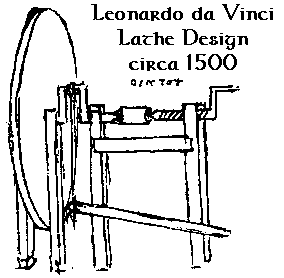 Leonardo da Vinci's sketch is believed to be the earliest example of a lathe which combines continual rotation and could also be operated by a single person. From d Vinci's Codex Atlanticus. The size of the flywheel makes me wonder if it was intended for metal turning. This illustration is also the first to show
a drive between two bearings of the headstock as well as a tailstock with a screw adjustment to turn work-pieces of different lengths between centres.
Leonardo da Vinci's sketch is believed to be the earliest example of a lathe which combines continual rotation and could also be operated by a single person. From d Vinci's Codex Atlanticus. The size of the flywheel makes me wonder if it was intended for metal turning. This illustration is also the first to show
a drive between two bearings of the headstock as well as a tailstock with a screw adjustment to turn work-pieces of different lengths between centres.
-The first floating mandrel for screw-cutting.
-A bow in place of the traditional spring pole.
-A cranked flywheel that had the tremendous advantage of continuous rotation providing constant speed and thus improved control over the cutting tool.
Great Wheel lathe, Joseph Moxon's Mechanick Exercises, 1680.
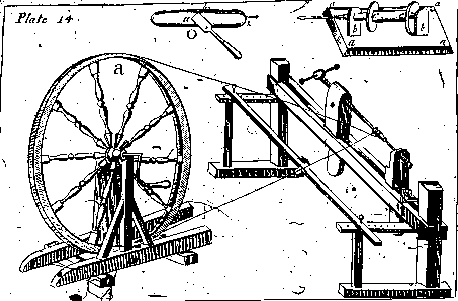 "But when Turnners work heavy Work, such as the Pole and Tread will not Command, the use the Great Wheel. This Wheel is so commonly known, that I shall need give you no other Description of it than the Figure itself", which you may see in Plate 14. a. It is turned about with one , and sometimes two Iron handles according to the weight of the work may require. -Joseph Moxon's Mechanick Exercises
"But when Turnners work heavy Work, such as the Pole and Tread will not Command, the use the Great Wheel. This Wheel is so commonly known, that I shall need give you no other Description of it than the Figure itself", which you may see in Plate 14. a. It is turned about with one , and sometimes two Iron handles according to the weight of the work may require. -Joseph Moxon's Mechanick Exercises
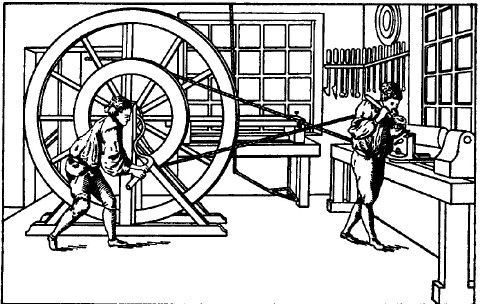 A Great Wheel Lathe from Encyclopedie methodique, Vol IV. This example is of interest becauses of the dual wheels, providing two different turning speeds
A Great Wheel Lathe from Encyclopedie methodique, Vol IV. This example is of interest becauses of the dual wheels, providing two different turning speeds
Scanned from Daumas' A History of Technology & Invention Vol. I.
18th century Great Wheel lathe.
Scanned from Home Building and Woodworking in Colonial America, by C. Keith Wilbur.
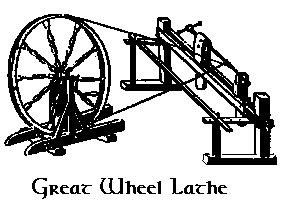
Turning & drilling beads for rosaries.
Source: Diderot's "Encyclopedia of Trades and Industry."
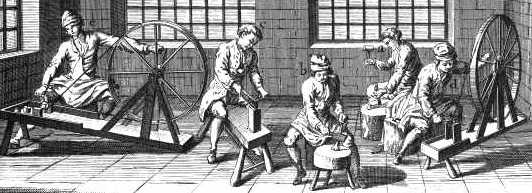
A Goldsmith's Greatwheel -powered lathe turning a scalloped platter following a pattern and (right) details of the mechanism which follows the pattern.
Source: Diderot's "Encyclopedia of Trades and Industry."
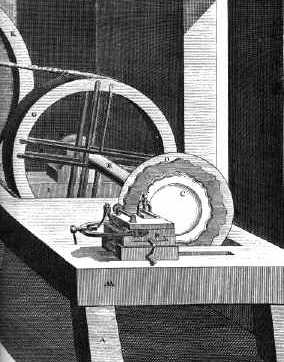
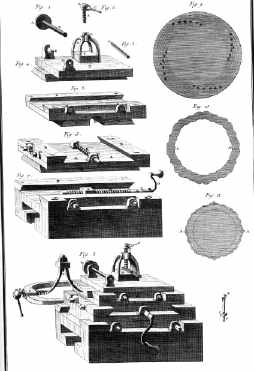
A Nineteenth Century TurnerThe Book of Trades, or Library of the Useful Arts 1806
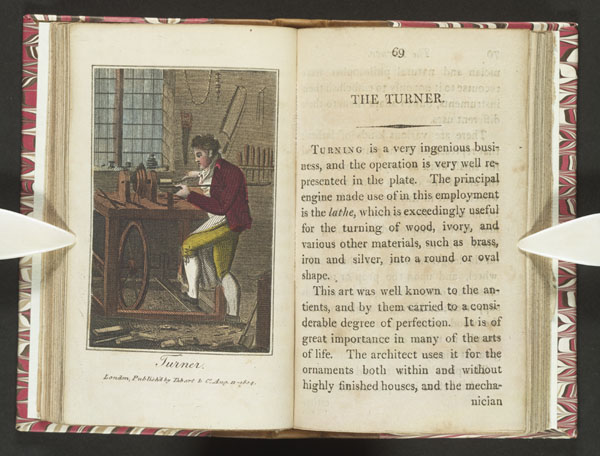
Another view of the same Turner.

If you like this site you can support it through: